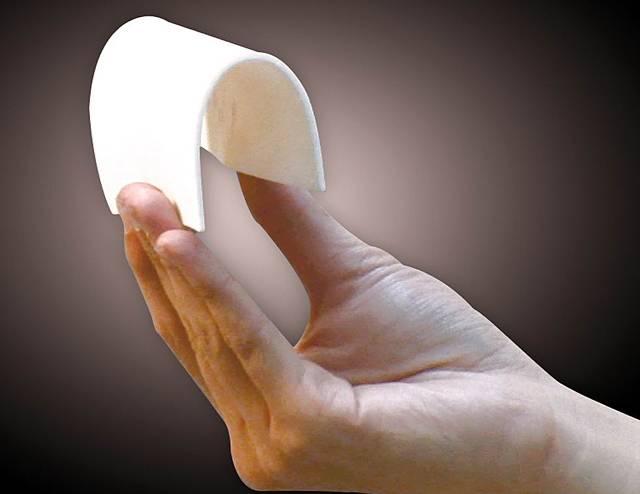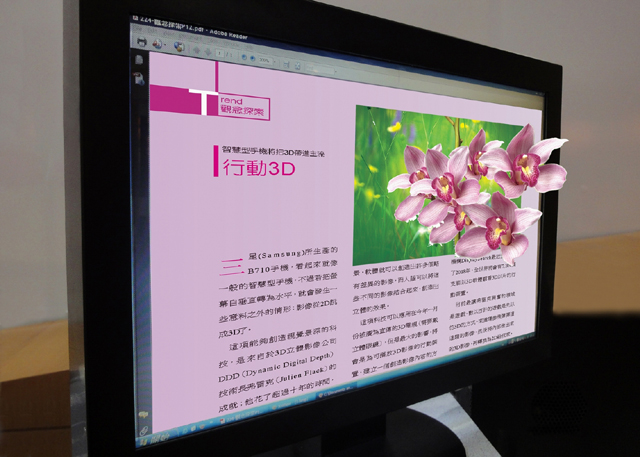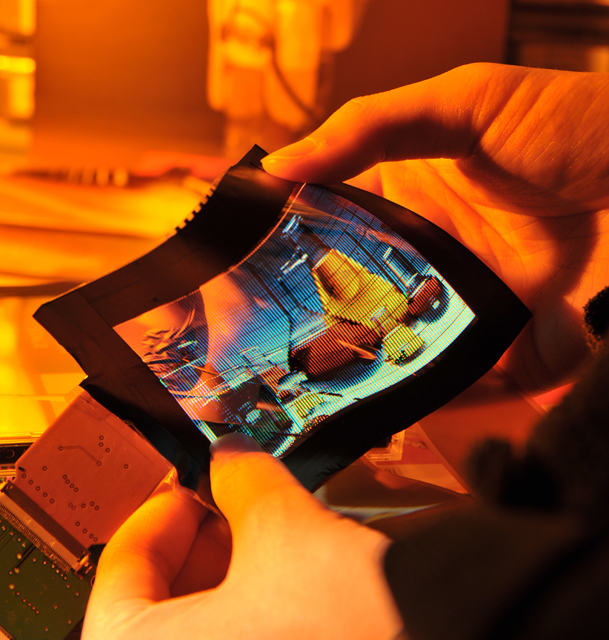Taiwan's ITRI Wins R&D 100 Awards for Third Straight Year
2010/08/02 | By Quincy LiangTaiwan's high-profile home of industrial-technology innovation-Industrial Technology Research Institute (ITRI)-once again proved its mettle by winning the highly respected R&D 100 Awards, which salute the 100 most technologically-significant products introduced into the marketplace over the past year.
The ITRI recently announced that three of its submits defeated many strong rivals worldwide to win at the 48th Annual R&D 100 Awards: the i2/3DW, next-generation 3D display technology with integral 2D and 3D for unaided viewing (in the Electrical Devices category); the FlexUPD, Flexible universal plane for displays (Electrical Equipment); and the REDDEX, the fire resistant super-composite (Materials).
Since 1963, the R&D 100 Awards have identified revolutionary technologies newly introduced to the market, many of which have become household names to help shape daily life for Americans. These include the flashcube, automated teller machine, halogen lamp, fax machine, liquid crystal display, Kodak Photo CD, Nicoderm anti-smoking patch, Taxol anticancer drug, lab on a chip, and HDTV. Winners of the R&D 100 Awards are selected by an independent judging panel and the editors of R&D Magazine of the U.S.
The ITRI, founded in 1973, is a nonprofit R&D organization engaged in applied research and technical services, having played a vital role to transform the labor-intensive economy in Taiwan to one now well-known for tech industries. Numerous world-class tech companies in Taiwan such as Taiwan Semiconductor Manufacturing Co. (TSMC) and United Microelectronic Corp. (UMC) can trace their origins to the ITRI.
Over the past two years, the ITRI has won R&D 100 awards for On-Chip AC LED lighting technology and STOBA (Self Terminated Oligomers with hyper-Branched Architecture), as well as from the Wall Street Journal the Technology Innovation Award for its FleXpeaker, a paper-thin loud speaker.
Significance
The R&D 100 Awards, widely recognized as the "Oscars of Innovation," have long been a benchmark of excellence for industrial sectors as diverse as telecommunications, high-energy physics, software, manufacturing, and biotechnology. For industry leaders, government labs, and academic institutions, the awards can be vital for gauging their efforts to commercialize emerging technologies. Winning an R&D 100 Award can provide the extra push needed by developers to turn innovations into successful, marketable products.
Familiar names as IBM, Frito Lay, Siemens, Intel Corp., and Toyota are winners of the R&D 100 Award this year for products ranging from biodegradable packaging to drive management systems for next-generation automobiles. Notably innovative products were also submitted by high-profile government and academic laboratories, including Oak Ridge National Laboratory, Lawrence Livermore National Laboratory and MIT's Lincoln Laboratory.
| ITRI Wins 3 R&D 100 Awards in 2010 | |
| Industrial Technology Research Institute (ITRI), Taiwan, ROC | i2/3DW, The Next-generation 3D Display Technology with Integral 2D and 3D for the Naked Eye (Electrical Devices) |
| Industrial Technology Research Institute (ITRI), Taiwan, ROC | Flexible Universal Plane for Displays, FlexUPD (Electrical Equipment) |
| Industrial Technology Research Institute (ITRI), Taiwan, ROC | REDDEX: The Fire Resistant Super-composite (Materials) |
| Source: R&D Magazine. | |
Fire-resistant Composite
According to the R&D Magazine, the REDDEX, the fire resistant super-composite from ITRI, is a new family of polymer-inorganic composite made in an ITRI proprietary process. A typical formulation consists of urethane-based components and alumina-trihydrate (ATH) combined to form a fire-resistant structure embedded in the composite. When subject to fire, polymer component chars and is slowly consumed by burning, and the material eventually converts into a bound inorganic porous structure. This effectively becomes a structure that has low thermal conductivity to insulate heat, showing good mechanical rigidity to maintain structural integrity.

ITRI further explains that REDDEX is the trade name of the new family of polymer-inorganic composites that contain a mixture of reactive polymers and inorganic materials. The chemistry is carefully designed to control the morphology of the composites such that the materials neither ignite nor spread fires, exceeding V1 and V0 rating requirements. Most uniquely, when the materials are exposed to intense fire (e.g. > 1000o C torch flame), the stable composite structures will form porous inorganic networks that have low apparent thermal conductivities. When exposed to fire, the organic functional group reacts with the corresponding functional group on the inorganic particle; the inorganic material absorbs the heat, converts it to radiation and emits it.
This means minimal heat transfer to the backside (i.e. the other side of the wall) resulting in excellent fire barrier properties. REDDEX does not burn, melt or drip, but rather it directly chars. The char is hard to burn and thus inhibits fire spreading while also maintaining structural integrity, preventing the building from collapsing. The REDDEX chemistry is based largely on the thermo-setting reaction, being very versatile and has been extended to several polymer matrixes to show equal fire-protection performances.
Unaided 3D Viewing
The R&D Magazine said that the ITRI's i2/3DW is a next-generation 3D display technology that is the first to fully and seamlessly integrate 3D displays for viewing without aides traditional 2D input. The technology relies on layering a conventional 2D LCD with ITRI's 2D/3D switching layer and a dynamic backlight LED unit.

Three-dimensional stereoscopic applications are the latest trend in consumer electronics, ITRI explains. The i2/3DW not only breaks through the current 3D display application restricted by small fixed areas on cellphones but also allows insertion of different sized 3D images on static text page, with 3D images able to be dragged to any location and reduced/enlarged as desired.
The 2D text is clearly legible and has the same high resolution as the display. This solution is a significant improvement over regular stereoscopic displays with full screen 3D images. The text resolution on these displays is lower, making it harder for the viewer to read. This technology can be applied to moving internet ads, internet games, 3D video games, product advertisement and other areas that use 3D media images.
Flexible Universal Plane Display
In response to long-sought technologies like flexible e-books, according to R&D Magazine, ITRI is now looking to popularize its flexible universal plane for displays, or FlexUPD, a paper-like flexible flat displays thinner than any displays currently on the market. The technology is compatible with liquid crystal display (LCD), organic light-emitting diode (OLED), and electronic paper display standards.

The developer of the universal plane notes that FlexUPD introduces a layer of de-bonding material between a polyimide layer and glass carrier to an existing thin film transistor (TFT) glass process. The TFT array that is used now for panel displays is made on this soft PI (Polyimide) film which can be smoothly cut away without damaging the transistors. It is just like a layer of non-stick material between a pancake and pan, enabling smooth separation of pancake from pan without damaging the pancake surface. This technology will help panel display manufacturers take advantage of their existing superiority in glass processes to cross over into flexible display production and provide new opportunities to produce high-value flexible displays with small-to-medium sized processes that are facing obsolescence, not to mention providing a timely solution to build at high cost manufacturing plant by the flat panel industry, the institute explains.




